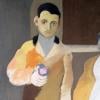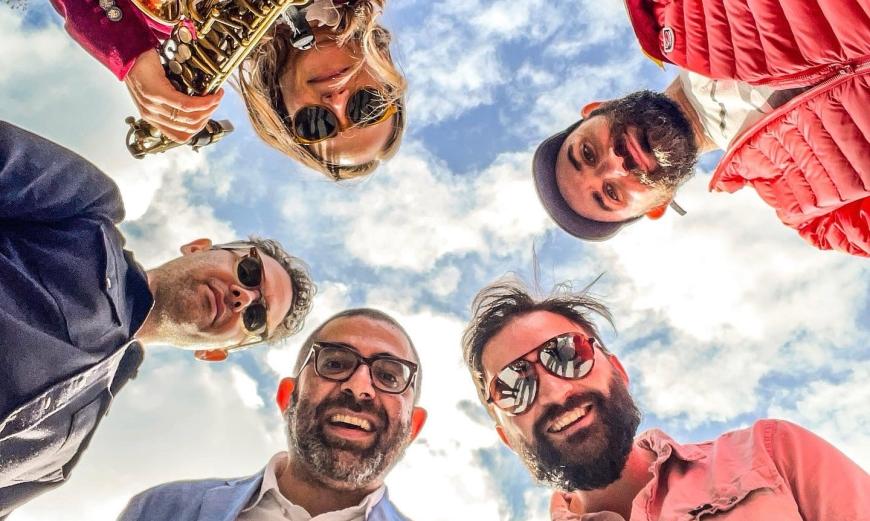
Music curators, like taxonomists, tend to be lumpers or splitters. The former look for commonalities and connections, while the latter seek to define as many discrete categories as possible. Rent Romus is a lumper.
A saxophonist and composer of myth-powered musical epics, Romus is also an impresario of the Bay Area’s teeming underground music scenes who resists the all-too-common impulse to pigeonhole artists. His wide-open aesthetic guides the projects released by his label, Edgetone Records, and manifests most spectacularly onstage at the Outsound New Music Summit. The 21st edition of the four-night festival takes place at Berkeley’s Finnish Hall July 26–29, and it’s an invaluable opportunity to catch music you might not otherwise experience.
“What I’ve always wanted to do is bridge worlds,” Romus said. “The Bay Area is packed full of incredible practitioners [of new music], and many are very diverse. From day one, I’ve always wanted to feature that. From a marketing standpoint, it’s a hard nut to crack. I could just call it a jazz festival. So many people play fast and loose with that. Aerosmith? Jazz festival! But I really wanted to bridge these worlds and showcase different aspects of people’s creativity.”
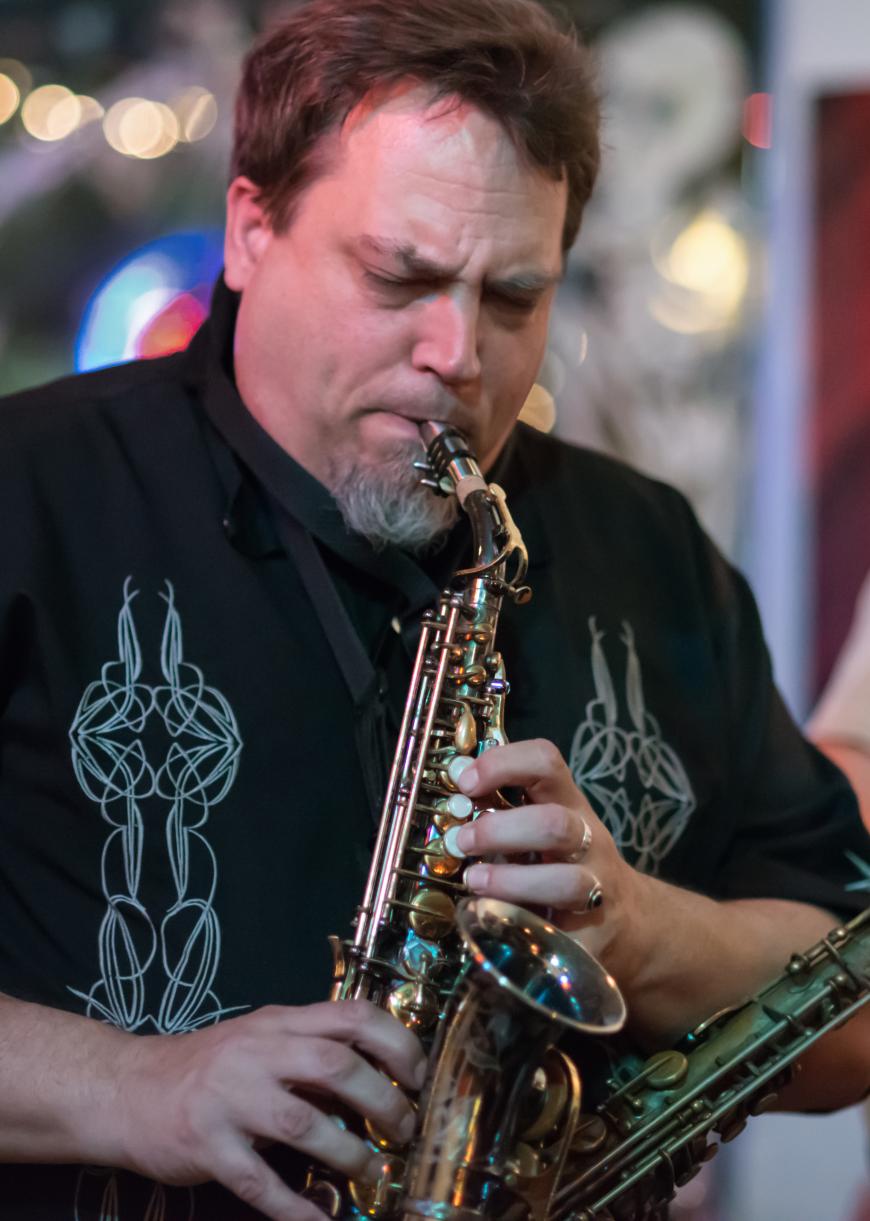
Romus knows all about the multiplicitous nature of creativity because he embodies it. In recent years, he’s been presenting an ever-expanding work, Manala, co-written with multi-instrumentalist Heikki Koskinen and based on Finnish folklore. But that’s just one facet of Romus’s artistry. “People don’t know I love to play jazz ballads,” he said. “You see musicians playing one style and think that’s what we do, but we’re highly diverse, and many of us do many different things. That’s part of what I’m trying to capture with Outsound.”
Mission accomplished. This year, Outsound opens with a triple bill that includes a solo set by Angela Edwards’s Sharkiface, a spooky electroacoustic project honed in Mills College’s electronic music program, and a solo set of synth noise by Colleen Kelly’s TanukiSpiderCat, created via an improvisational blend of electric cello, modular synth, and samples. The headliner is Bat Noise, the self-described “haunted industrial-doom jazz deathwave duo” of LuLu Gammaray on theremin, synth, samples, vocals, and trombone and Roxy Monoxide on tenor sax, floor tom, vocals, and effects. The fact that all three acts refer to animals in their monikers might be a coincidence — or perhaps not, considering that they all share the natural habitat of dank garages where “the dark underground of electronic noise music” takes place, Romus said.
Guitars take center stage the second night, July 27, with a double bill starting with Normal, a duo featuring guitar icon Fred Frith and the singular instrument inventor Sudhu Tewari. For the second set, the Moe Staiano Ensemble plays the latest version of Staiano’s composition Away Towards the Light (documented on a recent Edgetone album of the same name). Conducted by Suki O’Kane, the piece features Staiano on drums, Jason Hoopes on bass, and 12 guitarists working in groups of three and four.
A fascinating sui generis figure who’s best known for his dramatic piece Death of a Piano (no guitars will be harmed during the performance of Away Towards the Light), Staiano is exactly the kind of stateless musician whom Romus created Outsound to feature. “I don’t know if I fit anywhere,” Staiano said. “I just try to get in wherever because I feel I have something good to offer.”
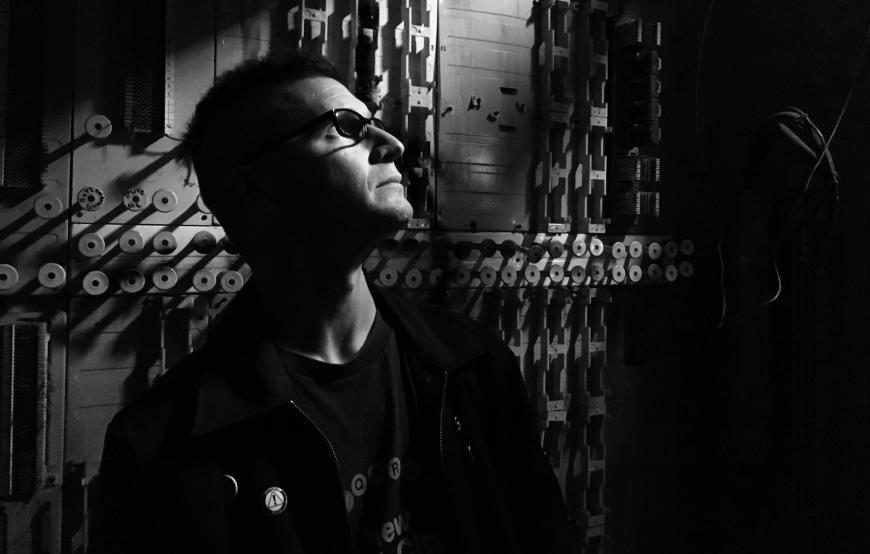
The fact that Staiano is sharing the stage with Frith, whose two-decade run teaching improvisation at Mills profoundly shaped the Bay Area’s experimental music scene, is a cherry on top of Romus’s Outsound sundae. “Fred is a big influence on what I do,” Romus said. “It’ll be a contrast because Normal is an improv duo that starts from the beginning with improvising off of each other and listening. [Personally] I’m coming from somewhere else now, focused on composing.”
The third program, on July 28, is a triple bill that includes the composer collective The Lost Shapes: bassist Safa Shokrai, vibraphonist Mark Pascucci-Clifford, alto saxophonist Beth Schenck, trumpeter Max Miller-Loran, and drummer Eric Garland (filling in for regular drummer Jason Levis). It’s the second incarnation of a group that brings together some of the most consistently eloquent Bay Area musicians informed by jazz idioms.
“Everyone is interested in composing,” said Shokrai, who’s a founding Lost Shape. “We’re all excited to write music for a regular group of people and make a sound out of that. Playing each other’s songs, we get influenced by each other, which is a really rich field to till. This incarnation has been playing together five or six years, and we really developed during a monthly gig at Woods Bar & Brewery in Uptown Oakland. We had a three-hour time slot to fill, which was fantastic and gave us the chance to try out all kinds of things.”
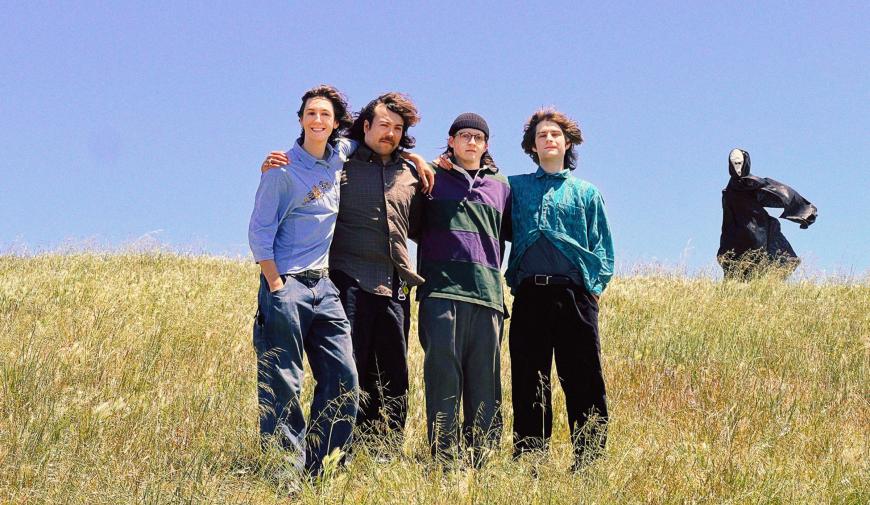
Sunday’s program also includes the experimental young art-rock soul band Pateka (known until recently as Aaron Space & His Terrestrial Underlings), a rising Berkeley combo featuring keyboardist and vocalist Elihu Knowles, electric guitarist and vocalist Dylan Ransley, electric bassist Quinn Girard, and drummer Ryan Higley. For Romus, the group represents a rising generation “and their incredible interest in cross-pollination,” he said. “I’ve seen these bands doing four or five stylistic elements, going from experimental sounds and hip-hop to soul, funk, and back into jazz.”
Sunday’s headliner is The Dirty Snacks Ensemble, a hip-hop-inflected chamber jazz septet led by Pascucci-Clifford. The group released one of 2022’s best albums, You Would Do Well (Slow & Steady), and includes keyboardist Steve Blum, drummer Dillon Vado, cellist Crystal Pascucci-Clifford, reed expert Cory Wright, electric bassist Rob Ewing, and percussionist Robert Woods-Ladue.
The closing session on Monday, July 29 features a convergence of expanded cinema and sound from Matt Robidoux, who deploys modular architecture that interprets physical input from two “ears of corn” sculptures cast in aluminum, partnering with analog visual performance artist and sound designer Lori Varga. The opening set, Post Doom Romance, brings together sound artists Seah (Chelsea Heikes) and Mykel Boyd, debuting recently completed audio work combining original synth composition, bowed instruments, and digital manipulation of field recordings from their one-month artist residency in the Finnish archipelago.
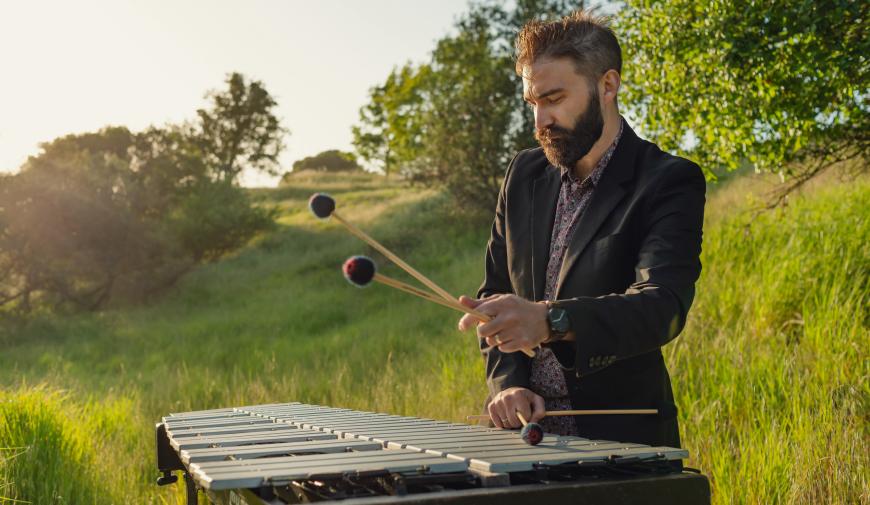
Outsound isn’t the only place where a broad spectrum of experimental music can be found in the Bay Area. Romus books the twice-monthly Luggage Store Creative Music Series in San Francisco, the Bay Area’s longest running new-music showcase. Rather than focusing exclusively on experimental music, Romus has expanded to include singer-songwriters and just about any artist performing original music.
A block north, there’s the Center for New Music, another essential outpost. In the Mission District, The Lab is a multidisciplinary dynamo with extensive digital resources, and the bookstore Medicine for Nightmares hosts the Friday night series Other Dimensions in Sound, curated by reed player David Boyce. In the East Bay, clarinetist and composer Matt Ingalls’s sfSound series has found a new home at the Dresher Ensemble Studio in West Oakland, while the Temescal Art Center hosts Shapeshifter Cinema on second Sundays and monthly improv performances and jam sessions. UC Berkeley’s CNMAT has been a longtime hotbed of audio and technological experimentation. Other Minds is another flagship organization where leading composers and musicians come together.
But with his catholic approach to programming, Romus has turned Outsound into a wide-open portal for musicians and audiences of all stripes. For Shokrai, the event fosters connections between scenes that can be insular and unapproachable. “I think the Bay Area has an incredible array of talented musicians, composers, and artists,” Shokrai said. “It’s unfortunate that we have a lack of venues through which artists and audiences can connect. That’s what makes [Outsound] very valuable. Even for us as listeners and musicians, I’m into my things. Somebody else is into their thing. Outsound is this space where so many different approaches and takes on making art happen. It’s fantastic to be exposed to each other’s stuff.”



